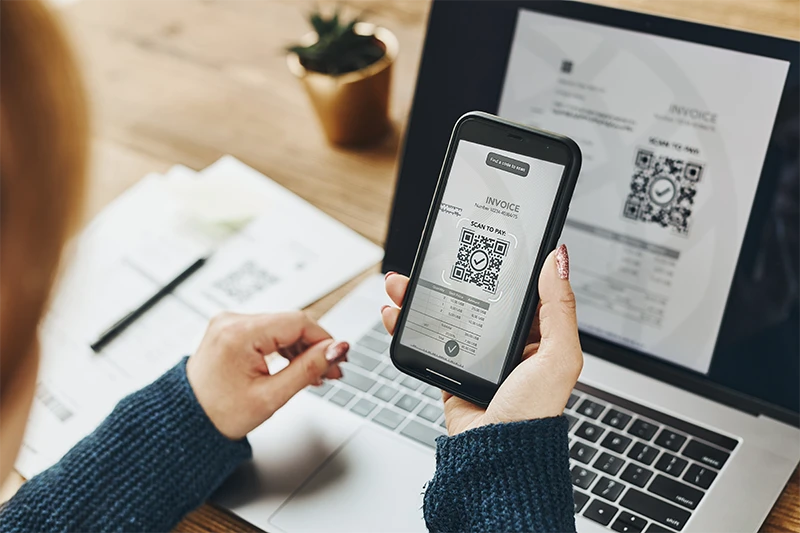E-Invoicing in Malaysia: From Paper Trails to Digital Tales

E-Invoicing in Malaysia: From Paper Trails to Digital Tales
E-invoicing is a significant step towards digital transformation in Malaysia, aimed at enhancing the efficiency of tax administration and supporting the country’s digital economy. This article explores the challenges, enforcement mechanisms, real purpose, and anti-corruption measures associated with e-invoicing in Malaysia.
The primary purpose of e-invoicing is to streamline the invoicing process by replacing traditional paper-based invoices with digital ones. This transition aims to enhance efficiency by automating the invoicing process, reducing manual errors, and speeding up transactions. It also aims to improve tax compliance by ensuring accurate recording and reporting of transactions, thereby reducing tax evasion. Additionally, it supports the digital economy by fostering a more robust digital infrastructure, aligning with global digital standards.
Whilst e-invoicing offers numerous benefits, it also presents several challenges:
Initial Setup Costs: Businesses need to invest in new software and possibly hardware to support einvoicing. This includes purchasing or upgrading accounting systems that can generate and process e-invoices. Employees will need training to understand and effectively use the new e-invoicing systems, involving both time and financial resources.
Integration Issues: Many businesses already have established financial and accounting systems. Ensuring these systems are compatible with the new e-invoicing requirements can be complex and may require significant adjustments or even complete overhauls. Transitioning from paper-based or other digital systems to a new e-invoicing system involves migrating existing data, which can be a time-consuming and error-prone process.
Compliance Burden: E-invoicing comes with a set of regulatory requirements that businesses must adhere to. Smaller businesses, in particular, may find it challenging to keep up with these requirements and ensure timely compliance. As regulations evolve, businesses will need to continuously update their systems and processes to remain compliant, which can be a continuous burden.
Data Security: E-invoicing involves the digital transmission of sensitive financial information. Ensuring this data is secure from cyber threats requires robust cybersecurity measures, which can be costly and complex to implement. With increased digital transactions, the risk of data breaches also increases. Businesses must be vigilant and proactive in protecting their data, which can be a
significant challenge.
Operational Disruptions: During the transition to e-invoicing, businesses may experience operational disruptions. This can include delays in invoicing and payments, which can affect cash flow. Employees and management may resist the change to a new system, especially if they are accustomed to traditional methods. Overcoming this resistance requires effective change management strategies.
Financial Impact on Small Businesses: Smaller businesses often operate on tighter budgets and may find the initial costs and ongoing compliance burdens of e-invoicing more challenging to manage compared to larger enterprises. Small businesses may lack the internal resources, such as IT support and financial expertise, to effectively implement and maintain an e-invoicing system. Any delays or disruptions during the transition period can have a more pronounced impact on small businesses, which often rely on steady cash flow to sustain operations.
The enforcement of e-invoicing in Malaysia is being rolled out in phases. From January 2024, businesses can voluntarily adopt e-invoicing. Starting June 2024, large businesses with an annual turnover exceeding MYR 100 million must comply, with subsequent phases for smaller businesses until full implementation by January 2027. The Inland Revenue Board of Malaysia (IRBM) will monitor compliance through the MyInvois Portal, which validates and records all e-invoices.
E-invoicing plays a crucial role in combating corruption by increasing transparency. Digital records of transactions reduce opportunities for fraudulent activities and underreporting. Immediate validation and recording of invoices ensure that all transactions are transparent and traceable. E-invoicing creates a clear audit trail, making it easier to detect and investigate suspicious activities.
The Inland Revenue Board of Malaysia (IRBM) is at the forefront of implementing e-invoicing. Their role includes setting standards, monitoring compliance, and providing support. IRBM has established guidelines and standards for e-invoicing to ensure consistency and compliance. Through the MyInvois Portal, IRBM monitors and validates e-invoices, ensuring that businesses adhere to the new regulations. IRBM offers resources and support to help businesses transition to e-invoicing, including training and technical assistance.
One of the significant benefits of e-invoicing is its potential to curb the circulation of black money. By ensuring that all transactions are recorded digitally and transparently, e-invoicing makes it much harder for businesses to engage in under-the-table dealings. This transparency helps reduce tax evasion, combat money laundering, and enhance financial integrity. With all transactions recorded, it becomes difficult to hide income and evade taxes. Digital records provide a clear trail, making it easier to detect and prevent money laundering activities. By reducing the opportunities for illicit financial activities, e-invoicing helps maintain the integrity of the financial system.
E-invoicing makes it difficult to hide or launder money, as every transaction is recorded and traceable. This transparency helps in identifying and preventing money laundering activities. For example, if a company attempts to launder money by creating fake invoices for non-existent services, the digital records can be cross-referenced with other financial data to identify discrepancies and suspicious patterns. This makes it easier for authorities to detect and investigate such activities.
E-invoicing ensures that all transactions are accurately reported, reducing the chances of underreporting income or inflating expenses to evade taxes. For instance, a business might previously have issued paper invoices that were not recorded in their official accounts, thereby underreporting their income. With e-invoicing, every invoice is digitally recorded and reported to the tax authorities in real-time, making it much harder to hide income and evade taxes.
Example: Consider a small business that provides consulting services. Under the old paper-based system, the business might issue paper invoices to some clients and not record these transactions in their official accounts, thereby underreporting their income to reduce their tax liability. With einvoicing, every invoice issued is automatically recorded and reported to the tax authorities. This makes it impossible for the business to hide these transactions, ensuring that all income is accurately reported and taxed accordingly.
The implementation of e-invoicing is expected to significantly increase tax revenue for authorities. This is due to several factors: improved compliance, reduced fraud, and efficient audits. With realtime data and automated reporting, businesses are less likely to underreport income or overstate expenses, leading to more accurate tax filings. The transparency and traceability of e-invoicing make it harder for businesses to engage in fraudulent activities, thereby reducing tax evasion. Digital records and clear audit trails make it easier for tax authorities to conduct audits and identify discrepancies, leading to more effective enforcement.
Based on global examples, countries that have implemented e-invoicing have seen significant improvements in tax compliance and revenue collection. For instance, Italy reported a 3.6% increase in VAT revenue in the first year after implementing mandatory e-invoicing. Similarly, Brazil saw a 10% increase in tax revenue following the adoption of e-invoicing. Given these precedents, it is reasonable to expect that Malaysia could see a similar increase in tax revenue, potentially in the range of 5-10% over the first few years of implementation.
Whilst the intentions behind e-invoicing are noble, one might cynically wonder if it will truly be successful. As the saying goes, “The road to hell is paved with good intentions.” There are always those who will find ways to circumvent the system, and the initial setup costs and compliance burdens could be significant hurdles for smaller businesses. Only time will tell if e-invoicing will be the panacea for Malaysia’s tax and corruption woes.
E-invoicing in Malaysia represents a significant advancement towards a more efficient, transparent, and compliant tax administration system. Despite the challenges, the long-term benefits of improved efficiency, enhanced compliance, and reduced corruption make it a vital component of Malaysia’s digital economy strategy. As the saying goes, “An ounce of prevention is worth a pound of cure,” and in this case, the early adoption of e-invoicing could save businesses from future headaches.


